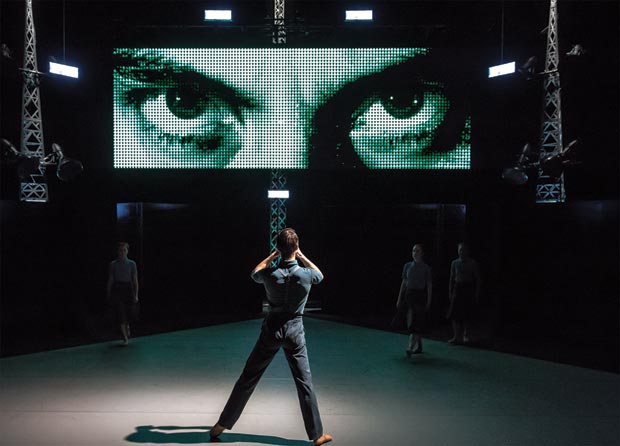
© Emma Kauldhar. (Click image for larger version)
Northern Ballet
1984
★★★★✰
London, Sadler’s Wells
24 May 2016
Interview with Jonathan Watkins
northernballet.com
www.sadlerswells.com
“Big Brother is watching you!” It’s been more than 65 years since the publication of George Orwell’s seminal 1984, yet its central motif, mass surveillance, remains eerily resonant in this age of government-sponsored wiretapping and email monitoring. Jonathan Watkins’ gritty adaptation of the novel for Northern Ballet, which just received its London premiere, is an excellent reminder of how enduring Orwell’s work is, and how powerful a channel ballet can be for complex human emotions like distrust and defeat.
The dystopian story imagines a bleak future of censorship and totalitarian rule, charting the downfall of government worker Winston after he begins to question the oppressive mechanics of this new world order. It’s a far cry from the fairy tale romances that tend to grace the ballet stage, but then again Northern Ballet is not one to shy away from hard-hitting literature: 1984 is part of a recent string of ambitious new narrative ballets from the Leeds-based troupe, sandwiched between 2013’s The Great Gatsby and 2016’s Jane Eyre. Naturally, Watkins has taken a few liberties with his source material, not least in revving up its romance factor, but he’s carefully preserved its dark tone, deftly communicating the menace of the infamous terminology dotting Orwell’s prose (“thoughtcrime,” “doublethink,” “memory hole”).
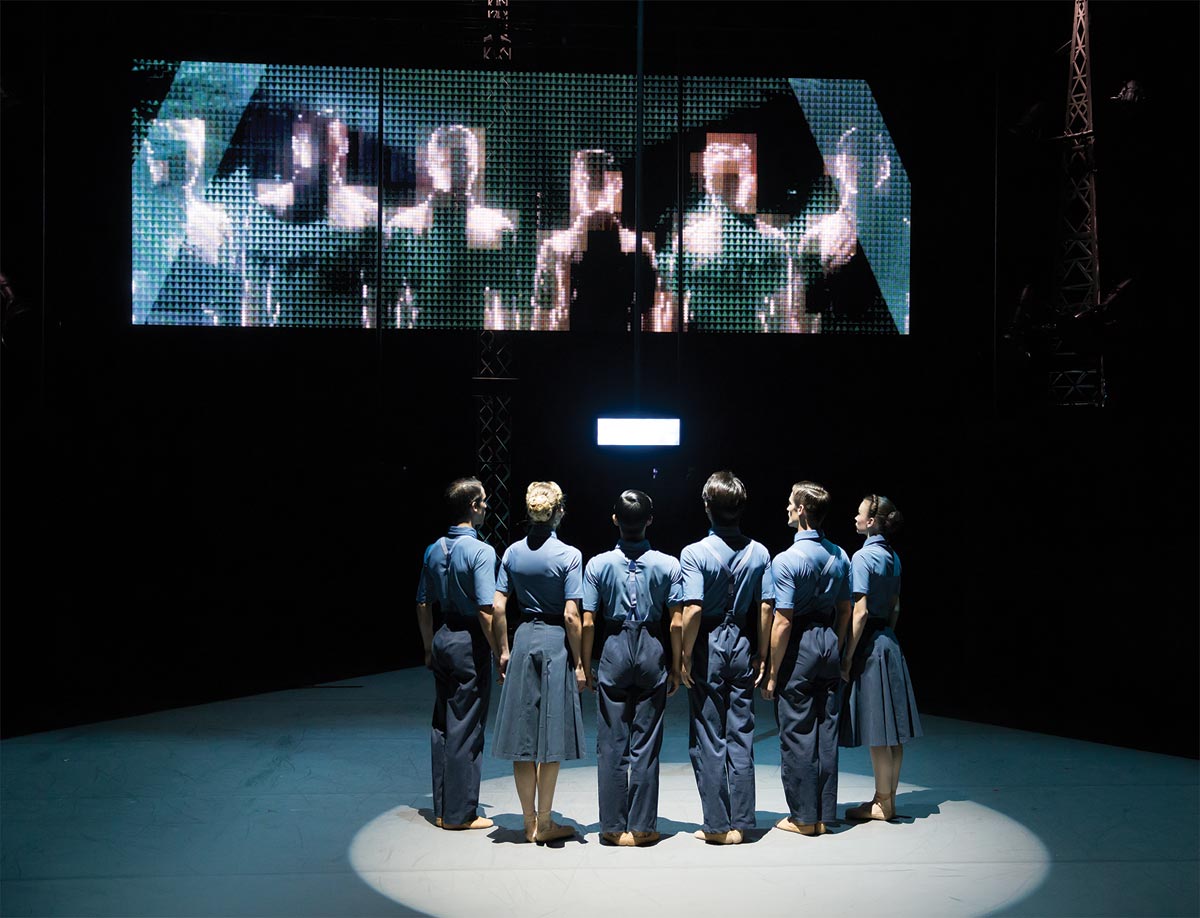
© Emma Kauldhar. (Click image for larger version)
A thick air of tension surfaces from the start, hastened by Alex Baranowsky’s twitchy score and the vigilant eyes of Big Brother peering out from a giant mounted ‘telescreen’. We’re in the nucleus of the sinisterly titled Ministry of Truth, where civic worker bees trade in historical revisionism at the behest of the oligarchical Inner Party. Their body language is mechanical and synchronised, their grim routine articulated through a robotic choreography of stiff backs and sharply angled limbs. As individuals the workers are cool, detached; as a group they’re terrifyingly alert – an aggressive pack empowered by uniformity and unencumbered by conscience.
It’s here we meet Winston (Tobias Batley), whose sensitive, apprehensive demeanour defies the conformity set out by his peers. Batley proves a sturdy dancer, neat in posture and untroubled by strict lines or long balances. His emotional fluency sparks with his character’s eager retreats to a junk shop filled with the scraps of yesteryear, and smoulders during his scenes with Julia, a fellow budding rebel played by the magnetic, long-limbed Martha Leebolt. The pair’s fiery love scene in the first act involves some of the best dancing in the show – risky lifts, tender embraces, reckless, red-hot entanglements charged with fear and desire. Their mutual vulnerability, a welcome foil to the rigidity of the Ministry workers, sadly morphs from thrilling to heartbreaking in the second half, when their illicit coupling steers them straight into the nightmarish Room 101.
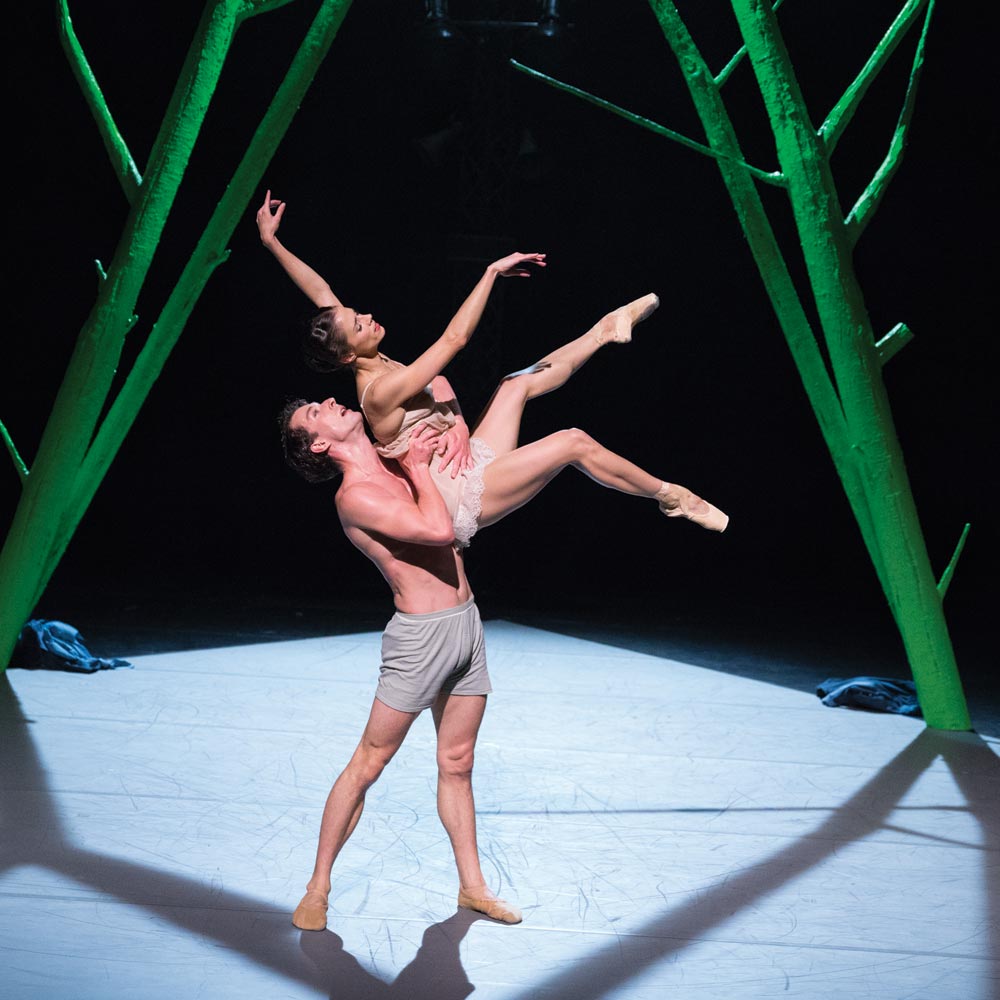
© Emma Kauldhar. (Click image for larger version)
The ballet’s gripping pace is among its greatest strengths, though the storytelling idles at times in the second act, a few too many knotty dashes between settings weighing it down. The choreography likewise slackens at this point, with a tendency towards overly literal portrayals, including Winston’s torture at the hands of Party officials, in which he’s shackled, punched and electrocuted. A third criticism I’d add is the fleeting inclusion of the Proles, the poor underclass of Orwell’s dystopia, who are employed so sparingly that the ballet probably could have skipped them altogether with few repercussions. (On the plus side, their warm ochre attire and loose-hipped stature does provide a nice, if short-lived, contrast to the icy, uniformed Ministry ranks.)
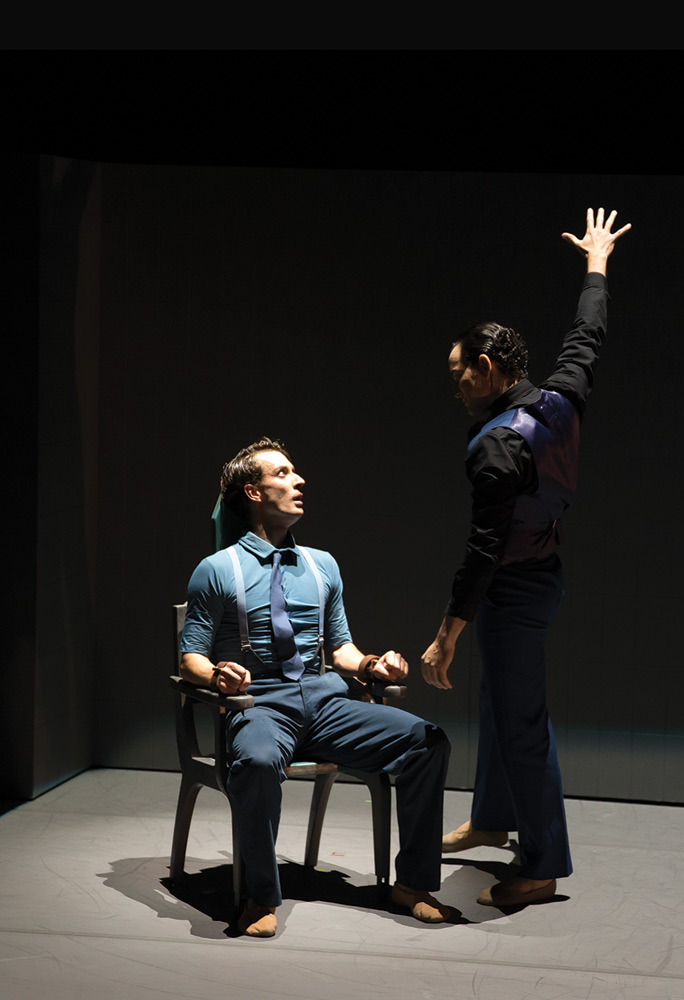
© Emma Kauldhar. (Click image for larger version)
That said, these are minor missteps that pale in the face of a major accomplishment: the introduction of an engaging, well-crafted alternative to the standard evening-length story ballet. Not only is 1984 a solid vehicle for Northern Ballet’s technical range (between them, the 21 dancers portray nervous citizens, vigorous workers, wayward operatives and menacing officials, each with a unique brand of movement); it also challenges perceptions about the kind of narratives ballet can and perhaps ought to explore. A fitting approach, given the subversive spirit of the story at hand.
















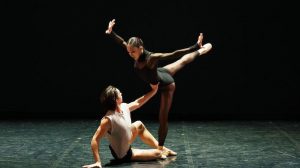
You must be logged in to post a comment.